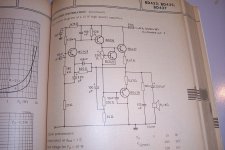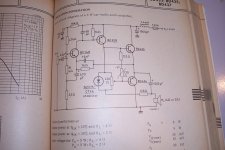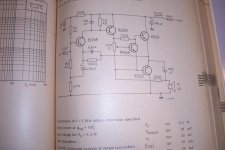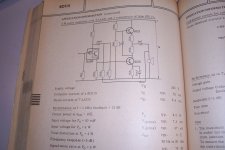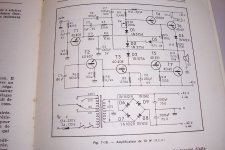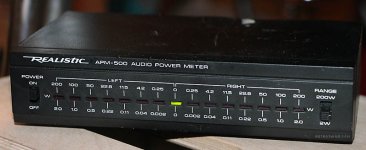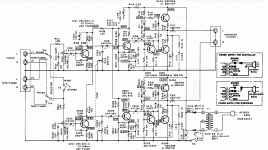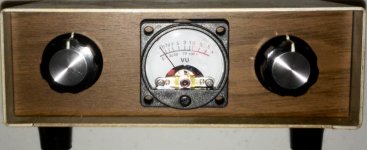Daniel inquired about simple, LTP-free discrete designs.
Here are some examples, mostly based on application notes from Motorola, Siemens, RCA, Philips, Sescosem, etc
Here are some examples, mostly based on application notes from Motorola, Siemens, RCA, Philips, Sescosem, etc
Attachments
-
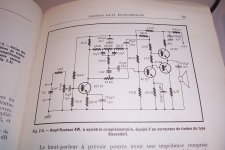 Dan01.jpg199.6 KB · Views: 2,350
Dan01.jpg199.6 KB · Views: 2,350 -
 Dan10.jpg176.7 KB · Views: 1,303
Dan10.jpg176.7 KB · Views: 1,303 -
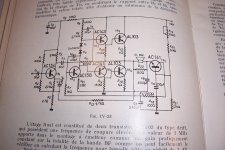 Dan09.jpg253.6 KB · Views: 1,175
Dan09.jpg253.6 KB · Views: 1,175 -
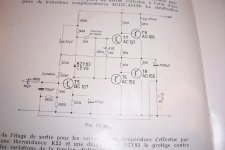 Dan08.jpg188.5 KB · Views: 1,148
Dan08.jpg188.5 KB · Views: 1,148 -
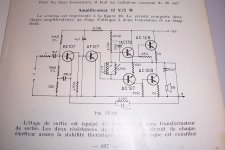 Dan07.jpg172.6 KB · Views: 1,199
Dan07.jpg172.6 KB · Views: 1,199 -
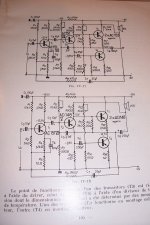 Dan06.jpg300.5 KB · Views: 1,230
Dan06.jpg300.5 KB · Views: 1,230 -
 Dan05.jpg208.8 KB · Views: 1,999
Dan05.jpg208.8 KB · Views: 1,999 -
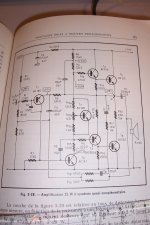 Dan04.jpg333 KB · Views: 1,784
Dan04.jpg333 KB · Views: 1,784 -
 Dan03.jpg205 KB · Views: 1,825
Dan03.jpg205 KB · Views: 1,825 -
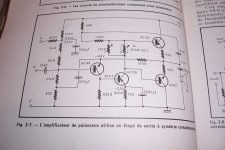 Dan02.jpg195.1 KB · Views: 1,914
Dan02.jpg195.1 KB · Views: 1,914
Last edited:
Continued......
Attachments
-
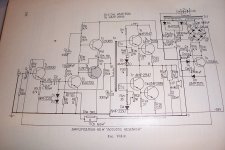 Dan20.jpg229.9 KB · Views: 756
Dan20.jpg229.9 KB · Views: 756 -
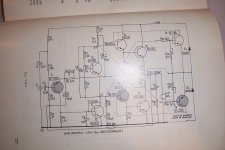 Dan19.jpg195.9 KB · Views: 721
Dan19.jpg195.9 KB · Views: 721 -
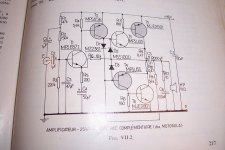 Dan18.jpg176.1 KB · Views: 721
Dan18.jpg176.1 KB · Views: 721 -
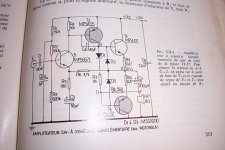 Dan17.jpg185.3 KB · Views: 2,146
Dan17.jpg185.3 KB · Views: 2,146 -
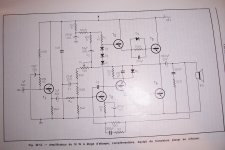 Dan16.jpg176.2 KB · Views: 633
Dan16.jpg176.2 KB · Views: 633 -
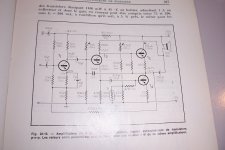 Dan15.jpg185.3 KB · Views: 667
Dan15.jpg185.3 KB · Views: 667 -
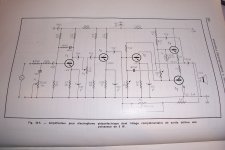 Dan14.jpg238.3 KB · Views: 585
Dan14.jpg238.3 KB · Views: 585 -
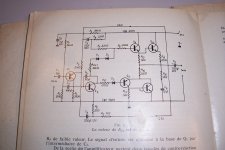 Dan13.jpg194 KB · Views: 646
Dan13.jpg194 KB · Views: 646 -
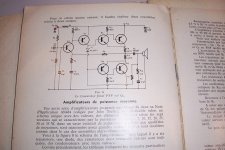 Dan12.jpg244.3 KB · Views: 675
Dan12.jpg244.3 KB · Views: 675 -
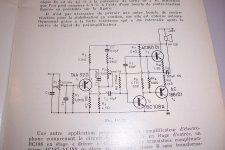 Dan11.jpg186.5 KB · Views: 842
Dan11.jpg186.5 KB · Views: 842
Continued.....
Attachments
-
 Dan27.jpg203.8 KB · Views: 556
Dan27.jpg203.8 KB · Views: 556 -
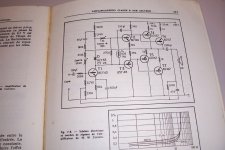 Dan28.jpg210.5 KB · Views: 567
Dan28.jpg210.5 KB · Views: 567 -
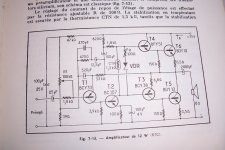 Dan29.jpg225.9 KB · Views: 547
Dan29.jpg225.9 KB · Views: 547 -
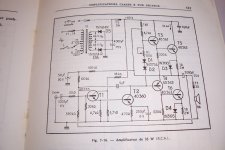 Dan30.jpg204 KB · Views: 581
Dan30.jpg204 KB · Views: 581 -
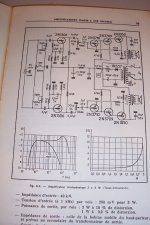 Dan26.jpg317.4 KB · Views: 542
Dan26.jpg317.4 KB · Views: 542 -
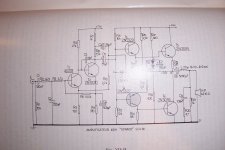 Dan25.jpg183.1 KB · Views: 611
Dan25.jpg183.1 KB · Views: 611 -
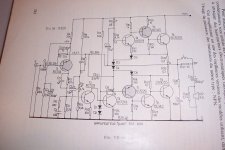 Dan24.jpg211.8 KB · Views: 528
Dan24.jpg211.8 KB · Views: 528 -
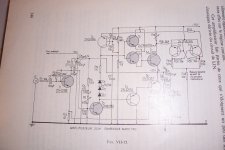 Dan23.jpg196.5 KB · Views: 562
Dan23.jpg196.5 KB · Views: 562 -
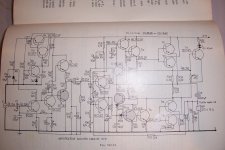 Dan22.jpg321.6 KB · Views: 557
Dan22.jpg321.6 KB · Views: 557 -
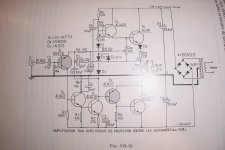 Dan21.jpg196.2 KB · Views: 684
Dan21.jpg196.2 KB · Views: 684
Oh, nostalgia! I've read the schematics. Some schemes I designed in my youth. And they all worked.
Now I use Lanzar. In my opinion it,s one of the best amp. I use floor speakers Jamo.
Now I use Lanzar. In my opinion it,s one of the best amp. I use floor speakers Jamo.
6 transistor single supply amps that are active on the forum are the TGM8 TGM8 - an amplifier based on Rod Elliot P3a
and the AX6 https://www.diyaudio.com/forums/sol...ly.html?highlight=retro+amp+50w+single+supply
which I'm listening to right now. I get 70w out of mine with a 70 v regulated power supply. those of use that hand wire instead of paying people manufacture the wiring (board) for us prefer to use a couple of transistor to regulate both channels, instead of 2 per channel per post #6. That amp will also overheat the coil or rip the suspension on your speaker if one solder joint pops loose.
AX6 works fine with modern transistors actually stocked at distributors like MPS8099, MPSA06, TIP41C/42C, MJ15003.
and the AX6 https://www.diyaudio.com/forums/sol...ly.html?highlight=retro+amp+50w+single+supply
which I'm listening to right now. I get 70w out of mine with a 70 v regulated power supply. those of use that hand wire instead of paying people manufacture the wiring (board) for us prefer to use a couple of transistor to regulate both channels, instead of 2 per channel per post #6. That amp will also overheat the coil or rip the suspension on your speaker if one solder joint pops loose.
AX6 works fine with modern transistors actually stocked at distributors like MPS8099, MPSA06, TIP41C/42C, MJ15003.
Last edited:
Thank you! These are easy to read and look especially doable. So, that's why transistors were so popular. I never knew, until I saw your post.Daniel inquired about simple, LTP-free discrete designs. Here are some examples, mostly based on application notes from Motorola, Siemens, RCA, Philips, Sescosem, etc
Also, here's my thoughts on the parameters that I'd need...
Size:
Main interest is in the easy to build, Class aB, complementary, non-ltp, and under 25W. A Test. How much Voltage (power) do your speakers need? ~40% use is 4W amplifiers, 30% more is 4W to 25W. So, 70% of relevance is under 25W. Amplifier sized relevant for bedroom, kitchen, laundry, office, parlor, bathroom, veranda (a house).
Exploring:
Discrete class aB projects of relevant small size seemed to be few/missing. That sells a lot of chips, which are prefab, with difficulty like finding perfectly fitting clothes. But, I'd like something that isn't just 'off the shelf'. To make sure of a difference, I asked about, non-ltp, non-quasi, single rail, and discrete parts.
And, you found them! 😀
Efficient:
And aB because I'd probably leave it on. Single rail because easy dc protect, also easier to reduce audio distortion of the speaker by reducing waste-loading. Very efficient right-sized class aB.
Easy assembly:
Seems like the 4W scale should probably have 7 or less transistors (preferably less), or at 20W scale 10 or less transistors (preferably less). Because, less complicated = less obstacles to use. At this scale, the amplifier was probably needed, and wanted to play same-day, rather than someday.
5 hamburger budget:
To fit samples, up to 5 units of 12 different devices, less than $12 could get enough devices for multi channel surround sound, if the transistor count wasn't extraneous. A power supply can be one or more 19vdc smps, free when laptops quit. The 24vct and 30vct transformers are numerous, often surplus.
Also,
I might have the funds to try many different little amplifiers -or- one oversized. However, in-home use (at least 70%) is similar to near-field applications. That's where I'd like to explore small-but-charming discrete audio amplifiers.
Maybe a picture is worth 400 words:
Remember the Radio Shack audio power meter, and you put it on the small range to make the led's go?
Have a look at that switch. 😎
Attachments
6 transistors is entirely enough if you regulate the power supply.Main interest is in the easy to build, Class aB, complementary, non-ltp, and under 25W. ~40% use is 4W amplifiers, 30% more is 4W to 25W. So, 70% of relevance is under 25W.
To make sure of a difference, I asked about, non-ltp, non-quasi, single rail, and discrete parts.
Schematic #1 in post #4, I have one board of a 1970 ST120 survivor with actual 40409, 40410, drivers. The 40411 outputs turned to sand before I bought it, I'm using NTE60 (equivalent to MJ15003). The 40409 & 40410 have more clear high frequencies than the TIP41c/42c I'm using as drivers on the other channel, but you can't buy 40409/40410 anymore: Or any TO5 transistor you can put a heat sink on. Drivers need a heat sink IMHO, dynaco certainly thought so.
Those schematics in post #3, a lot of them require AC*** transistors which I thought were germanium. Germanium power transistors went the way of the unicorn, although you can still buy TO92 germanium. Also the BC/BD###, you can't buy 3 digit transistors like those anymore. Except from NTE or NewJersey that leave out most of the parameters on the datasheet.
I'm using D44R2 as the VAS in my AX6 board with 20 mhz Ft, but you can't buy genuine those anymore either. MJE15028/29 are fast enough, if a bit pricey. And MJE15032/33 should make better drivers than TIP41c/42c they have faster Ft.
I listen at 1.5 Vpp most of the time on my 101 db 1w 1m speakers, which is about 1/8 watt. But with my 70 v rail on the AX6, I have 70 db of headroom if a CD of 1812 Overture is recorded correctly with the soft parts really soft. The cannon shot can be suitably overwhelming. SP2 speakers can take 300W.
Advantage of AX6 over these, it has DC feedback to keep the centerline input of the output cap near the center of the voltage rail to ground span. That gives the most volume out without clipping even if the gain of the transistors wander as they warm up.
If you use a 19v computer switcher supply, be sure to put a choke +CRC filter on the input to your amp chassis to keep the RF howl out. 32 v supplies from copier/printer/fax machines can give you more headroom. As you run the rail voltage up, be sure to calculate the resistor for the input transistor to keep the wattage well below .5w limit of the TO92 package. I have a heat sink on the VAS too.
If you don't want to build point to point as I did, Prasi has created a layout for the AX6 that you can print out and use as a mask for etching. It is in the later posts of the thread. I wouldn't put the output transistors on the board however, the heat sink is not big enough. I made my output transistors remote to the board, as you can see in my post 252 or so on that thread.
Last edited:
There are plastic drivers that take heatsinks and deliver the current for hungry old TO3s too, though we don't need much grunt for 25W or less. Genuine On-semi parts from MJE340/350, BD139/40 to MJE243/253 are suitable and still in production. Many Chinese copies of once common Japanese types work well enough too but maybe only by luck......Drivers need a heat sink IMHO, dynaco certainly thought so....
That looks appealing. Is there a 'mini' or small scale version?6 transistor single supply amps that are active on the forum are the TGM8 TGM8 - an amplifier based on Rod Elliot P3a
Voltage range 40vdc single or 20+20vdc (slightly more if unloaded)?
Last edited:
Post 606 at the end on the AX6 thread is a 25 W version. It has a NPN input transistor instead of a PNP as the TGM8.
Note AX6 is quasi-comp. There is no symmetry with a speaker capacitor even with complementary output transistors because the speaker is returned to the negative rail (called ground) instead of the center tap of the transformer. Your proposed power supplies don't have center taps, neither do my existing transformers. Somebody calculated the distortion of AX6 on the thread and came up with low tenths.
Schematics #5 & #10 of the post #1 by elvee are complimentary. But #5 is darlingtons which tend to thermally run away, and #10 requires a 15 ma N-channel jfet on input which has been replaced by NTE312. Most of the other complementary outputs on post #1 & #2 have germanium power output transistors, unobtainable. For good reason, germanium power transistors tended to short out frequently.
Note AX6 is quasi-comp. There is no symmetry with a speaker capacitor even with complementary output transistors because the speaker is returned to the negative rail (called ground) instead of the center tap of the transformer. Your proposed power supplies don't have center taps, neither do my existing transformers. Somebody calculated the distortion of AX6 on the thread and came up with low tenths.
Schematics #5 & #10 of the post #1 by elvee are complimentary. But #5 is darlingtons which tend to thermally run away, and #10 requires a 15 ma N-channel jfet on input which has been replaced by NTE312. Most of the other complementary outputs on post #1 & #2 have germanium power output transistors, unobtainable. For good reason, germanium power transistors tended to short out frequently.
Last edited:
That looks appealing. Is there a 'mini' or small scale version?
Voltage range 40vdc single or 20+20vdc (slightly more if unloaded)?
Please see Bigun's TGM8 with Single Supply
There is a PCB by sonal, build by maouna and still4given and mod by Bimo in the last page.
Last edited:
That statement is true....The 40409 & 40410 have more clear high frequencies than the TIP41c/42c I'm using as drivers on the other channel...
40409/40410: 0.7a, 50MHz, HFE50
BD139/BD140: 1A, 50MHz, HFE40
TIP41C/TIP42C: 6a, 3MHz, HFE20
All Transistors. Datasheet. Cross Reference Search. Transistor Database.
Thanks! Yes, I was looking for something like that.Please see Bigun's TGM8 with Single Supply There is a PCB by sonal, build by maouna and still4given and mod by Bimo in the last page.
It is nice to see the Sziklai output for efficient bias.
RS-SA10
1.21 watts. Requires a nuclear reactor to generate it. I had that amplifier a loooong time ago. Graduated from that to an STK module kit, which was also a nice simple single supply design.
SA10, SA100B, SA100C, SA101, SA500 are similar designs.
Imagine a theoretical voltage divider with one part a 10 ohm 'resistor' on your heatsink and the other part a speaker. Too hot, not much output power. So, we'd replace the 10 ohm part with a 0.4 ohm part. Runs cool, outputs 3 watts to 8 ohm speakers.
The relevant factor is speaker load.
Output transistor Minimums?
1A device > 20 ohm speakers (SA10)
2A device > 16 ohm speakers
3A device > 12 ohm speakers (SA500)
5A device > 8 ohm speakers
8A device > 6 ohm speakers
10A device > 4 ohm speakers
That was sort of a guess, but you get the picture. If the device isn't stout enough, the energy will go to the heatsink, not the speaker. At least the fix is simple.
From hilariously TO126 size MJE200/210, to compact TO220 size FJP5200/FJP1943 and everywhere in-between, those are reasonable output specs for little amplifiers.
So, Radio Shack probably didn't want their little amplifiers competing against their larger amplifiers.
At alltransistors.com, when I typed in SA10's output transistors from the schematic, I didn't find any output device specs. Oops! I'll blame Radio Shack's accountants for that.1.21 watts. Requires a nuclear reactor to generate it. I had that amplifier a loooong time ago.
Imagine a theoretical voltage divider with one part a 10 ohm 'resistor' on your heatsink and the other part a speaker. Too hot, not much output power. So, we'd replace the 10 ohm part with a 0.4 ohm part. Runs cool, outputs 3 watts to 8 ohm speakers.
The relevant factor is speaker load.
Output transistor Minimums?
1A device > 20 ohm speakers (SA10)
2A device > 16 ohm speakers
3A device > 12 ohm speakers (SA500)
5A device > 8 ohm speakers
8A device > 6 ohm speakers
10A device > 4 ohm speakers
That was sort of a guess, but you get the picture. If the device isn't stout enough, the energy will go to the heatsink, not the speaker. At least the fix is simple.
From hilariously TO126 size MJE200/210, to compact TO220 size FJP5200/FJP1943 and everywhere in-between, those are reasonable output specs for little amplifiers.
So, Radio Shack probably didn't want their little amplifiers competing against their larger amplifiers.
Enclosure plans
I think packard black, with sanded-across clear coated front like a 1960's receiver, and with matching silver trim.
It is the size of your hand.
The chips were far too boring in my kitchen, so that's why I worked very hard for discrete. This won't break a window, but it could inconvenience a teacup. It is going slowly--Next time, I will make the things twice as big, so that the connections are at least as wide as the soldering iron tip.
Here are the enclosure materials (attached photo):
I think packard black, with sanded-across clear coated front like a 1960's receiver, and with matching silver trim.
It is the size of your hand.
The chips were far too boring in my kitchen, so that's why I worked very hard for discrete. This won't break a window, but it could inconvenience a teacup. It is going slowly--Next time, I will make the things twice as big, so that the connections are at least as wide as the soldering iron tip.
Here are the enclosure materials (attached photo):
Attachments
Thank you Elvee sir for uploading these vintage diagrams..Daniel inquired about simple, LTP-free discrete designs.
Here are some examples, mostly based on application notes from Motorola, Siemens, RCA, Philips, Sescosem, etc

- Home
- Amplifiers
- Solid State
- A collection of vintage, single supply, low to medium power amplifiers for Daniel
